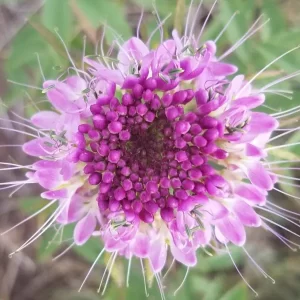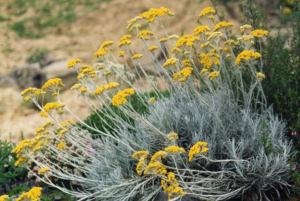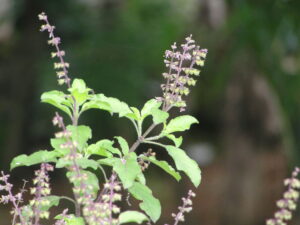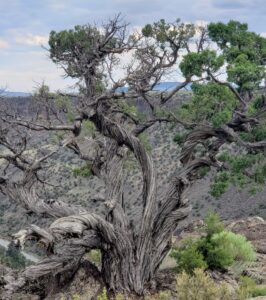What does it mean to touch and to be touched? To us humans, the obvious answer is skin to skin contact. But what if you are a sessile being, for example a tree? How do you touch then? If the molecules that constitute our skin are part of us, are the aromatic molecules we emit part of us? Human lovers communicate deeply and desire through their mutual smells. Do trees touch each other and us through the volatile aromatic molecules they release into the air we all share?
When we are touched by an aromatic molecule, the molecule literally binds to the specific receptor in our body. Not just in our nose. We have olfactory receptors, of different subtypes, in virtually every tissue of our body. We don’t just smell with our nose, we smell with every organ, with our skin, with our kidney, with our heart.
There are over nine hundred genes in the human genome that encode olfactory receptors. And that is just the family of receptors called Olfactory Receptors (OR). There is another entire family of receptors called Transient Receptor Potential Channels (TRPC), which encode the feeling of coolness of mint and apparent heat of capsaicin and many other, as yet to be discovered, sensations.
If you think of each receptor as the letter of an imaginary alphabet, imagine what complex ‘words’/ideas/archetypes you could form with such an alphabet. Our English alphabet pales by comparison. We have, most of us, become completely unconscious of smell. We’ve lost our instinct. Yes, some may eloquently talk about beautiful aromas, essential oils or perfumes, but that is an intellectual construct, using language. What if we were still native speakers in the language of scent?
Since I was in medical school, I kept asking ‘Why do we have dopamine as neurotransmitter?’ Why this molecule and not another instead? Dopamine is not a very ‘sensible’ molecule to use as a neurotransmitter in a long-living human brain, since it forms a toxic breakdown product that accumulates in the brain. Why then use this molecule?
I came to realize that the reason we have dopamine in our brains is that we inherited it from plants. Plants evolved dopamine and the molecular machinery to make it millions of years before we ever walked the earth. In the same way that plants co-evolved with pollinators (e.g. bees) and developed aromatic molecules to influence the behavior of these pollinators, I believe that dopamine is there so that plants can influence our behavior.
For example, all ‘drugs of abuse’ such as morphine, cocaine, are molecules that plants make and that increase dopamine in our brains. While they were in natural concentrations in plants and plant materials they served a natural purpose, including healing, but then of course humans extracted and concentrated them and caused a disruption in the natural balance, that has had a profound impact on human history through addiction and other issues. In the same vein, we could ask ‘Why do we have olfactory receptors?’ Again, I think plants wanted to make sure that they could communicate with us.
 Aromatic molecules touch us at the smallest material level, the closest distance. I touch and I am touched. In my work with people with addiction issues I learned that what underlies most addiction is psychological trauma. This includes not just abuse but neglect, not just personal but collective, not just the experiencer but historical/inherited/epigenetic trauma.
Aromatic molecules touch us at the smallest material level, the closest distance. I touch and I am touched. In my work with people with addiction issues I learned that what underlies most addiction is psychological trauma. This includes not just abuse but neglect, not just personal but collective, not just the experiencer but historical/inherited/epigenetic trauma.
And of course the trauma of the world, as the environment is being destroyed by human activity and neglect. The wounded wounder. The word trauma comes from the Greek and means cut or wound. As Gabor Mate has said, trauma doesn’t just hurt the body and the soul, but it also cuts us off from our spirituality, and our meaningful connections to the beings around us. Trauma literally cuts us off from our rich, natural environment and leaves us in a void, be it in the meaningless wasteland of cities and endless suburbs, nature cut apart, or in the prison of our suffering minds, addicted, seeking redemption, that bliss that we all remember, the Garden of Eden.
It seems that history is just an endless story of trauma after trauma. The oldest stories we have, e.g. The Book of Job or the Epic of Gilgamesh, are full of trauma. I think we humans evolved storytelling as a way of trying to heal from and integrate trauma.
So much for a brief outline of trauma, being cut-off, being disconnected from nature and dissociated from self. Now let’s look at aromatic molecules and why they seem so synchronistically perfect for healing trauma. In many spiritual traditions the word for spirit is same as the word for breath and air, e.g. pneuma in ancient Greek, ruach in Hebrew, etc. Even the English word awe carries this between its meaning and its sound–that is we make a slow, open-mouthed exhale, a spirited breath.
The first thing we do when we are born is that we inhale and the last thing we do as we die is exhale. The air we exhale is inhaled by others. Plants turn our exhaled carbon dioxide into oxygen which we in turn need to breathe. We are connected to all living things through the air we breathe.
The air is between and within all of us and forms a giant presence around and within us all, a great spirit that we are all part of. If spirit is air, then the volatile aromatic molecules could be seen as the ‘neurotransmitters’ of this spirit, or conduits, messengers within the spirit realm. In Alchemy this is Mercurius, the ever-changing messenger, reconciler of opposites, as hard to capture as a scent or the wind.
The opposite of Addiction is Connection 1. How perfectly we are touched by these Molecules of Connectedness to heal the trauma that has cut us off. We can heal through reestablishing relationship to all beings around us.
References (1) http://upliftconnect.com/opposite-addiction-connection/





